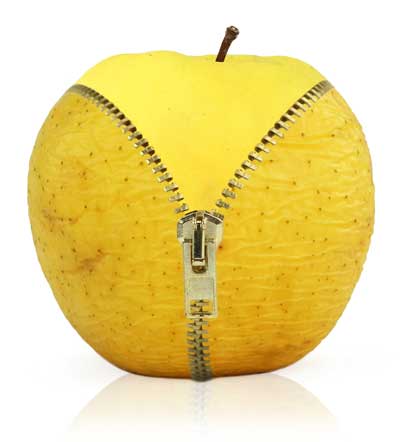


Natural aging of our skin is inevitable. The rate of the aging, though, is determined by both internal (intrinsic) and external (extrinsic) factors.

Intrinsic aging refers to the natural changes that occur as we age, resulting in thinner, less resilient skin. Dead surface cells begin to shed more slowly, causing the surface to be more opaque and less efficient at retaining moisture. New cell production slows, so the skin gradually gets thinner. The middle layer of the skin, the dermis, also begins to atrophy and thin. The structural collagen and elastin in this layer lose volume, and, especially after menopause, the production of substances that hold water and plump the skin decreases. As a result, wrinkles and creases begin to form, and youthful volume is lost.
Extrinsic aging refers to environmental forces that can damage the skin, primarily solar UV radiation. Exposure to external forces speeds up the natural processes of intrinsic aging. Wrinkles tend to develop more quickly. Skin may become rough and leathery with brown spots and rough patches. The walls of the blood vessels thin, resulting in easy bruising, and supportive collagen breaks down more quickly. Excessive exposure to solar radiation, aside from it’s damaging effects, can also cause unhealthy physical changes to the skin cells.
The first step to better skin is to avoid compounding the damage that has already been done by avoiding excessive exposure to the sun and using a high-quality sunscreen when you are in the sun. The next step is to take advantage of the many effective treatments designed to help correct the damage. Call us and set up a Total Look Consultation. In many cases, we can restore a luminous, fresh, and healthy-looking complexion!